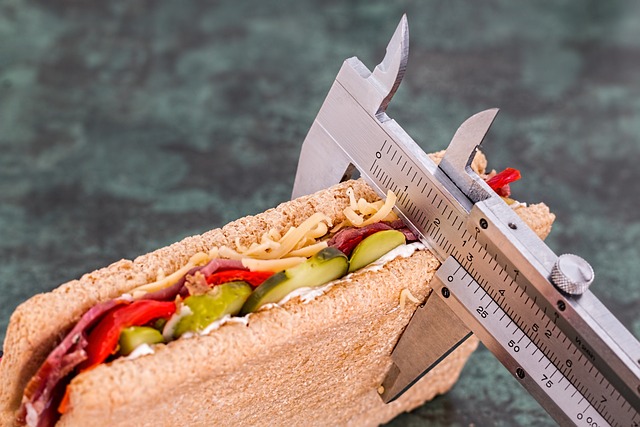
A. Caloric Intake and its Importance for Weight Management and Overall Health
When it comes to maintaining a healthy weight and promoting overall well-being, caloric intake plays a crucial role. The number of calories we consume daily directly impacts our body weight, energy levels, and overall health. Understanding and managing our caloric intake is essential for achieving weight loss or gain goals, supporting physical activity, and maintaining optimal health.
B. Introducing Aplilean: A Supportive Weight Loss Product
Various tools and products are available to aid individuals in managing caloric intake in their weight loss journeys. One such product is “Aplilean,” a weight loss supplement for healthy weight management. While it is important to note that caloric intake primarily depends on food choices and portion sizes, Aplilean can complement a well-balanced diet and exercise routine by providing additional support and promoting a healthy metabolism.
Aplilean contains natural ingredients that are known for their potential to boost metabolism, suppress appetite, and enhance fat burning. It is intended to be part of a comprehensive weight loss plan that includes a calorie-controlled diet and regular physical activity.
It’s important to remember that individual results may vary, and consulting with a healthcare professional or registered dietitian is recommended before incorporating any weight loss product into your regimen. Aplilean should be used with a healthy lifestyle, including a balanced diet and exercise, to achieve sustainable weight loss goals.
Now that we understand the significance of caloric intake and the role of Aplilean, let’s delve deeper into how to determine the appropriate number of calories one should consume daily to achieve their weight goals and maintain overall health.

Disclaimer: This website may contain affiliate links, which means that if you click on a product link and make a purchase, we may receive a commission. Please note that the commission earned through these affiliate links helps support the maintenance and operation of this website.
II. Understanding Your Current Weight and Activity Leve
A. The Significance of Knowing Your Current Weight and its Impact on Calorie Needs
Understanding your current weight is essential in determining the amount of calories you should consume daily. Your weight provides a baseline measurement to assess your goals and make informed decisions about caloric intake. Whether you aim to lose, maintain, or gain weight, your current weight is a starting point for calculating the caloric deficit or surplus required to achieve your desired outcome.
Different individuals have different metabolic rates, which can be influenced by age, genetics, and body composition. Knowing your current weight can estimate your daily caloric needs more accurately, considering your unique circumstances.
B. How Activity Level Affects Calorie Requirements
Activity level plays a significant role in determining your calorie requirements. Physical activity increases your energy expenditure, meaning you burn more calories. People with higher activity levels generally have higher caloric needs to fuel their bodies adequately.
Sedentary individuals who engage in minimal physical activity may require fewer calories. At the same time, those who lead active lifestyles or participate in regular exercise may need additional calories to meet their energy demands. When assessing your activity level, it is crucial to consider both structured exercise routines and daily activities, such as walking, standing, or engaging in physically demanding tasks.
C. Guidance on Determining Your Current Weight and Activity Level
To determine your current weight accurately, you can use a reliable scale at home or visit a healthcare professional for precise measurement. It is recommended to weigh yourself under consistent conditions, such as in the morning before eating or drinking, wearing minimal clothing, and using the same scale consistently.
Your activity level can be assessed by evaluating your daily routine and exercise habits. Consider the duration, intensity, and frequency of your physical activities, including gym workouts, sports, walking, or other forms of exercise. Additionally, consider how much time you spend sedentary, such as sitting at a desk or engaging in leisure activities requiring minimal movement.
Understanding your current weight and activity level forms the foundation for determining your caloric needs accurately. With this information, you can calculate the appropriate caloric intake that aligns with your weight goals and promotes overall health.
III. Setting Weight Loss or Gain Goals
A. Emphasize the Importance of Setting Realistic and Achievable Weight Loss or Gain Goals.
Setting realistic and achievable weight loss or gain goals is crucial for long-term success. Establishing targets within reach lets you maintain motivation and track your progress effectively. It is essential to avoid setting overly ambitious goals that may lead to frustration or unsustainable practices.
B. Discuss the Role of Caloric Deficit or Surplus in Achieving these Goals.
Caloric deficit or surplus is instrumental in achieving weight loss or gain goals. A caloric deficit is necessary to lose weight, meaning you consume fewer calories than your body burns. This deficit prompts your body to utilize stored fat as an energy source, leading to gradual weight loss. A caloric surplus is needed to gain weight, where you consume more calories than your body expends, resulting in weight gain in muscle or fat, depending on your exercise regimen.
C. Provide General Guidelines for Determining Appropriate Weight Loss or Gain Targets.
When determining appropriate weight loss or gain targets, it is recommended to aim for a gradual and steady pace of change. For weight loss, a general guideline is to target a loss of 1-2 pounds per week, which is considered safe and sustainable. This can be achieved through a caloric deficit of around 500-1000 calories daily.
Regarding weight gain, a conservative approach should prioritize lean muscle mass rather than excessive fat gain. Aiming for an increase of 0.5-1 pound per week is a reasonable target, requiring a caloric surplus of approximately 250-500 calories daily.
However, it’s important to note that these are general guidelines, and individual variations may exist. When setting weight loss or gain goals, factors such as metabolism, body composition, and overall health should be considered. Consulting with a healthcare professional or registered dietitian can provide personalized guidance based on your needs and circumstances.
By setting realistic and achievable weight loss or gain goals and understanding the role of caloric deficit or surplus, you can establish a solid foundation for your journey towards a healthier weight and overall well-being.

IV. Considering Dietary Restrictions or Preferences
A. Highlight the Relevance of Dietary Restrictions or Preferences in Managing Caloric Intake.
Dietary restrictions or preferences play a significant role in managing caloric intake. They shape the types of foods we consume and can affect our ability to meet specific nutritional requirements. Considering these restrictions or preferences ensures we balance meeting our dietary needs and adhering to our personal choices or health-related limitations.
B. Address Various Dietary Considerations such as Vegetarian, Vegan, Gluten-Free, etc.
When it comes to dietary considerations, there are several common categories that individuals may fall into, such as vegetarian, vegan, gluten-free, or other specific dietary choices. These considerations can impact the availability of certain food groups and nutrients in one’s diet.
Vegetarians, for example, avoid consuming meat but may still include dairy or eggs. Vegans, on the other hand, abstain from all animal products, including dairy and eggs. Gluten-free diets are necessary for individuals with gluten sensitivity or celiac disease, requiring them to avoid foods containing gluten.
Understanding each dietary consideration’s specific requirements and limitations is essential to ensure a balanced and nutritious diet while managing caloric intake.
C. Offer Suggestions on How to Accommodate Dietary Needs While Monitoring Calorie Intake.
To accommodate dietary needs while monitoring caloric intake, consider the following suggestions:
- Plan meals mindfully: Consider the specific dietary restrictions or preferences when planning your meals. Research and explore a variety of recipes and meal options that align with your needs.
- Focus on whole foods: Emphasize whole, unprocessed foods that naturally align with your dietary restrictions or preferences. These include fruits, vegetables, legumes, whole grains, and plant-based proteins.
- Seek alternative protein sources: If you follow a vegetarian or vegan diet, ensure adequate protein intake by incorporating plant-based protein sources such as tofu, tempeh, beans, lentils, quinoa, and nuts.
- Read food labels: When managing dietary restrictions or preferences, reading food labels becomes crucial to identify any potential allergens or ingredients that may not align with your needs.
- Consult with a registered dietitian: For personalized guidance, seek the expertise of a registered dietitian who can help tailor a meal plan that accommodates your specific dietary needs while ensuring you meet your caloric and nutritional requirements.
By considering your dietary restrictions or preferences, you can make informed choices that align with your values or health needs while effectively managing your caloric intake.
V. Assessing Overall Eating Habits
A. Emphasize the Significance of Evaluating and Improving Overall Eating Habits.
Assessing and improving overall eating habits is crucial for maintaining a healthy relationship with food and managing caloric intake effectively. Eating habits influence weight, energy levels, nutrient intake, and overall well-being. By evaluating and making positive changes to our eating habits, we can establish a sustainable and balanced approach to nutrition.
B. Provide Tips for Identifying Unhealthy Eating Patterns and Making Healthier Choices.
To identify unhealthy eating patterns and make healthier choices, consider the following tips:
- Keep a food diary: Track your daily food intake to become aware of your eating patterns and identify potential improvement areas. Note the types of foods consumed, portion sizes, and any emotional or situational triggers that may influence your choices.
- Recognize emotional eating: Be mindful of your relationship with food and your eating tendencies in response to emotions, such as stress, boredom, or sadness. Find alternative coping mechanisms for managing emotions rather than turning to food.
- Prioritize whole, nutrient-dense foods: Focus on incorporating whole foods into your diet, such as fruits, vegetables, lean proteins, whole grains, and healthy fats. These provide essential nutrients while often being lower in calories than processed or high-sugar foods.
- Limit processed foods and added sugars: Minimize consumption of processed foods, including sugary snacks, sodas, and packaged meals. These tend to be high in calories, unhealthy fats, and added sugars, which can contribute to weight gain and adverse health effects.
- Practice mindful eating: Engage in mindful eating by paying attention to your body’s hunger and fullness cues. Eat slowly, savor each bite, and listen to your body’s signals to avoid overeating. This allows you to gauge portion sizes better and prevent mindless eating.
C. Discuss the Role of Portion Control and Mindful Eating in Managing Calorie Intake.
Portion control and mindful eating are essential strategies for managing calorie intake effectively. Portion control involves being mindful of the amount of food consumed, ensuring it aligns with your caloric goals. By moderating portion sizes, you can prevent excessive calorie intake and maintain a healthy balance.
Mindful eating exceeds portion control and encourages a deeper connection with your food. You can fully appreciate and enjoy your meals by paying attention to the sensory experience of eating, such as the taste, texture, and smell. This practice promotes a healthier relationship with food and can help prevent overeating or emotional eating
.
By assessing and improving overall eating habits, identifying unhealthy patterns, and incorporating portion control and mindful eating, you can develop healthier eating habits that support your caloric management goals and contribute to long-term well-being.
VI. Calculating Daily Caloric Needs
A. Introducing Different Methods for Estimating Daily Caloric Needs
Estimating your daily caloric needs is crucial for understanding how many calories you should consume daily. There are various methods you can use to calculate this, including:
- Harris-Benedict equation: This equation considers your gender, age, weight, and height to estimate your Basal Metabolic Rate (BMR), which represents the number of calories your body needs to function at rest. You can apply an activity factor to determine your daily caloric needs from there.
- BMR calculation: Calculating your Basal Metabolic Rate (BMR) using formulas such as the Mifflin-St. Jeor equation can estimate the calories required for basic bodily functions at rest. Once you have your BMR, multiply it by an activity factor to determine your daily caloric needs.
B. Explaining the Concept of Calorie Deficit or Surplus Based on Weight Loss or Gain Goals
Understanding the concept of calorie deficit or surplus is essential to achieve weight loss or gain goals. A calorie deficit occurs when you consume fewer calories than your body needs, resulting in weight loss. Conversely, a calorie surplus means consuming more calories than your body requires, leading to weight gain.
Generally, a deficit of 500-1000 calories per day can result in a safe and sustainable weight loss of 1-2 pounds per week. On the other hand, a surplus of 250-500 calories per day can support gradual weight gain.
C. Offering Practical Examples and Steps to Calculate Individual Caloric Requirements
Calculating your caloric requirements involves a few steps:
- Determine your Basal Metabolic Rate (BMR) using a suitable equation or online calculator. This represents the calories needed for basic bodily functions at rest.
- Consider your activity level and apply an activity factor to your BMR. Sedentary individuals may use a factor of 1.2, while moderately active individuals may use 1.55. Adjust the factor accordingly based on your specific lifestyle.
- If your goal is weight loss, create a calorie deficit by subtracting a certain number of calories (e.g., 500-1000 calories) from your daily caloric needs. This deficit should be achieved by reducing calorie intake and increasing physical activity.
- If your goal is weight gain, create a calorie surplus by adding a certain number of calories (e.g., 250-500 calories) to your daily caloric needs. Ensure these additional calories come from nutritious foods to support muscle growth and overall health.
- Monitor your progress and adjust your calorie intake as needed. Regularly reassess your goals, body composition, and overall well-being to ensure you are on the right track.
Remember, these calculations provide estimates and should be a starting point. Factors like metabolism, genetics, and specific health conditions can influence caloric needs. Consulting with a registered dietitian can provide personalized guidance and support for effectively calculating and adjusting your caloric requirements.

VII. Determining the Ideal Caloric Intake
A. Discussing the Factors Influencing the Ideal Caloric Intake
The ideal caloric intake varies from person to person and is influenced by several factors, including age, gender, activity level, body composition, and overall health. Understanding these factors is crucial for determining your individual caloric needs.
- Age: As we age, our metabolism naturally slows down. Older individuals may require fewer calories to maintain weight than younger individuals.
- Gender: Men generally have higher muscle mass and higher metabolic rates than women, which may result in higher caloric needs. However, individual variations exist, and it’s also essential to consider other factors.
- Activity Level: Individuals with higher physical activity levels require more calories to fuel their bodies. Those who exercise regularly or have physically demanding jobs typically have higher caloric needs.
B. Highlighting the Importance of Consulting a Healthcare Professional or Registered Dietitian
It’s important to emphasize that determining the ideal caloric intake is a complex process that requires personalized considerations. Consulting a healthcare professional or registered dietitian is highly recommended to obtain accurate and tailored recommendations based on your needs, goals, and health conditions.
These professionals can assess your circumstances, conduct comprehensive evaluations, and provide evidence-based guidance to help you achieve optimal caloric intake for your unique situation.
C. Providing a General Range for Caloric Intake Based on Goals
While personalized recommendations are crucial, here is a broad range for caloric intake based on shared goals:
- Weight Loss: A safe and sustainable weight loss goal is generally achieved through a calorie deficit of 500-1000 calories daily. This typically results in a gradual weight loss of 1-2 pounds weekly.
- Weight Maintenance: To maintain your current weight, aim for a caloric intake that balances your energy expenditure. This means consuming enough calories to match your daily energy needs.
- Weight Gain: A calorie surplus of 250-500 calories per day can support gradual and healthy weight gain for individuals seeking to gain weight. Ensure these additional calories come from nutrient-dense foods to promote muscle growth and overall well-being.
It’s important to note that these ranges are general recommendations and may not be suitable for everyone. Individual variations, such as metabolism, body composition, and specific health conditions, must be considered. A healthcare professional or registered dietitian can help determine the ideal caloric intake range based on your unique circumstances.
Remember, the quality of calories matters too. Focus on nutrient-dense foods that provide essential vitamins, minerals, and macronutrients to support overall health and well-being.
In conclusion, while broad ranges can provide a starting point, seeking professional guidance is crucial in determining the ideal caloric intake that aligns with your goals and promotes your overall health and wellness.
VIII. Long-Term Goals and Sustaining a Healthy Lifestyle
A. Discussing the Significance of Long-Term Goals Beyond Just Weight Loss or Gain
When managing caloric intake, it’s essential to have long-term goals that extend beyond weight loss or gain. Long-term goals can provide motivation, promote overall well-being, and help maintain a healthy lifestyle. These goals include improving cardiovascular health, enhancing athletic performance, preventing chronic diseases, and feeling more energized and confident.
By shifting the focus from short-term outcomes to long-term goals, you can adopt a holistic approach to your health and make sustainable changes that extend beyond temporary weight fluctuations.
B. Encouraging the Adoption of Sustainable Healthy Habits for Lifelong Wellness
Sustaining a healthy lifestyle involves adopting habits that support long-term well-being. Rather than relying on quick fixes or fad diets, prioritize the following sustainable practices:
- Balanced and Nutritious Diet: Aim for a balanced diet that includes a variety of whole foods, such as fruits, vegetables, lean proteins, whole grains, and healthy fats. This approach ensures you receive essential nutrients while enjoying various flavors and textures.
- Regular Physical Activity: Incorporate regular physical activity into your routine. Engage in activities you enjoy, such as walking, jogging, cycling, swimming, or dancing. Find opportunities to be active throughout the day, such as taking the stairs instead of the elevator or going for a walk during your lunch break.
- Mindful Eating: Practice mindful eating by listening to your body’s hunger and fullness cues. Eat slowly, savor each bite, and appreciate the sensory experience of eating. This helps you enjoy your meals, prevents overeating, and fosters a healthier relationship with food.
- Adequate Hydration: Stay adequately hydrated by drinking sufficient water throughout the day. Water supports digestion, nutrient absorption, and overall cellular function. Limit sugary drinks and opt for water as your primary beverage.
- Prioritizing Sleep: Get adequate sleep to support your overall well-being. Lack of sleep can disrupt your appetite-regulating hormones, leading to poor food choices and increased calorie intake.
C. Providing Tips and Strategies for Maintaining a Balanced Diet and Regular Physical Activity
To maintain a balanced diet and regular physical activity, consider the following tips:
- Meal Planning: Plan your meals and snacks ahead of time to ensure you have nutritious options readily available. This can help you make healthier choices and avoid relying on convenient but less healthy options.
- Portion Control: Practice portion control using smaller plates and bowls, and be mindful of serving sizes. Listen to your body’s cues of hunger and fullness to avoid overeating.
- Regular Exercise Routine: Establish a normal exercise routine with various activities to keep it enjoyable and prevent boredom. Aim for at least 150 minutes of moderate-intensity aerobic activity or 75 minutes of vigorous-intensity activity per week, along with strength training exercises.
- Find Support: Seek support from friends, family, or community groups that share your goals. A support system can provide motivation, accountability, and encouragement.
- Practice Self-Care: Take care of your mental and emotional well-being by engaging in activities that reduce stress, such as meditation, yoga, or hobbies you enjoy. Managing stress can help prevent emotional eating and support healthy habits.
Remember, sustaining a healthy lifestyle is a lifelong journey. Be patient with yourself, celebrate small victories, and be open to adapting your habits as needed. Focus on progress, not perfection, and make choices that align with your long-term and overall goals.
IX. Conclusion

A. Summarizing the Key Points Covered in the Article
In this article, we have explored the topic of caloric intake and its significance for weight management and overall health. We began by understanding the importance of evaluating our weight, activity level, dietary restrictions, and eating habits. We then delved into setting realistic weight loss or gain goals and the role of caloric deficit or surplus in achieving them.
Furthermore, we discussed accommodating dietary restrictions or preferences while monitoring calorie intake and assessing overall eating habits. We explored the concepts of portion control and mindful eating in managing calorie intake effectively. Additionally, we guided in calculating daily caloric needs and determining the ideal caloric intake based on various factors. Lastly, we emphasized the significance of long-term goals and sustaining a healthy lifestyle.
B. Reiterating the Importance of Personalized Caloric Intake Based on Individual Factors
Throughout this article, it has been emphasized that caloric intake is a highly individualized matter. Factors such as age, gender, activity level, body composition, and overall health play a crucial role in determining the ideal caloric intake for each person. It is vital to consult with healthcare professionals or registered dietitians to obtain personalized recommendations that align with individual needs, goals, and health conditions. They can provide tailored advice and ensure that your caloric intake supports your well-being and long-term objectives.
C. Encouraging Readers to Make Informed Choices about Caloric Intake for Overall Health and Well-being
Understanding and managing caloric intake is fundamental to maintaining a healthy lifestyle. By making informed choices about the quality and quantity of the calories we consume, we can support our overall health and well-being. It is crucial to prioritize nutrient-dense foods, practice portion control, engage in regular physical activity, and adopt sustainable habits.
Remember that long-term goals extend beyond weight loss or gain and encompass various aspects, including cardiovascular health, disease prevention, and overall vitality. By incorporating these principles into our lives, we can establish a balanced approach to nutrition and sustain a healthy lifestyle in the long run.
In conclusion, apply the knowledge and insights from this article to your unique circumstances. Make informed decisions about your caloric intake, seek professional guidance, and prioritize your overall health and well-being. You are taking proactive steps towards a healthier and more fulfilling life by doing so.